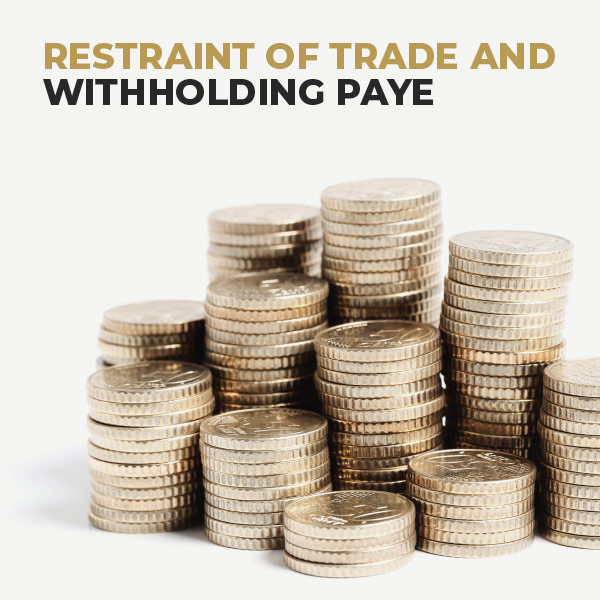Understanding Restraint of Trade Agreements
In the competitive business landscape, employers often seek to protect their confidential information, trade secrets, and customer relationships. A restraint of trade agreement serves as a legal instrument to restrict former employees from engaging in similar activities that could harm the employer’s business interests.

Image: www.golegal.co.za
In South Africa, restraint of trade clauses are governed by the common law and the Constitution. These clauses must balance the employer’s legitimate business interests with the employee’s right to freedom of trade. To be enforceable, a restraint of trade must meet the following criteria:
- Reasonable in scope and duration
- Protect a legitimate business interest
- Not unduly restrict the employee’s freedom to work
Types of Restraint of Trade Agreements
There are various types of restraint of trade agreements, including:
- Non-compete clauses: Prevent employees from working for a competitor in the same industry or region.
- Non-solicitation clauses: Prohibit employees from soliciting customers or clients of their former employer.
- Non-disclosure agreements: Restrict employees from disclosing confidential information acquired during their employment.
Enforceability of Restraint of Trade Agreements
The enforceability of restraint of trade agreements depends on their reasonableness. Courts will consider factors such as:
- The nature of the business and the employee’s role
- The geographic scope of the restriction
- The duration of the restriction
- The availability of alternative employment opportunities for the employee
While restraint of trade agreements can be an effective way to protect business interests, it is crucial to ensure their compliance with the law. Drafting a legally sound restraint of trade agreement requires careful consideration and legal counsel.
Tips for Drafting a Restraint of Trade Agreement
- Identify legitimate business interests: Clearly define the specific interests the agreement seeks to protect.
- Define the scope and duration: Specify the geographic area and time period the restriction applies to.
- Use clear and concise language: Ensure the agreement is unambiguous and easily understood.
- Consider alternative employment options: Leave room for the employee to explore other job opportunities that do not violate the agreement.
- Obtain legal advice: Consult with an experienced attorney to ensure the agreement is legally sound and enforceable.

Image: www.taxconsulting.co.za
FAQ on Restraint of Trade Agreements
Q: Can I enforce a restraint of trade agreement against an employee who breached it?
A: Yes, you may be able to take legal action to seek an injunction or damages.
Q: What are the consequences of breaching a restraint of trade agreement?
A: Breaching a restraint of trade agreement could result in legal liability, including monetary damages and injunctions preventing you from working in certain capacities.
Q: Can a restraint of trade agreement be modified?
A: Yes, restraint of trade agreements can be modified by mutual agreement between the parties. However, it is advisable to seek legal advice before doing so.
Q: How do I draft a legally sound restraint of trade agreement?
A: To draft a legally sound restraint of trade agreement, it is essential to clearly define the protected interests, scope, duration, and alternative employment options. Seeking legal counsel is recommended.
Restraint Of Trade South Africa Template
Conclusion
Restraint of trade agreements play a crucial role in protecting legitimate business interests and safeguarding confidential information. However, employers must use them responsibly and ensure their compliance with the law and respect for the employee’s right to work. By following the guidelines and tips outlined in this article, you can effectively navigate the complexities of restraint of trade agreements in South Africa.
Do you have any questions or thoughts about restraint of trade agreements? Let us know in the comments below.






